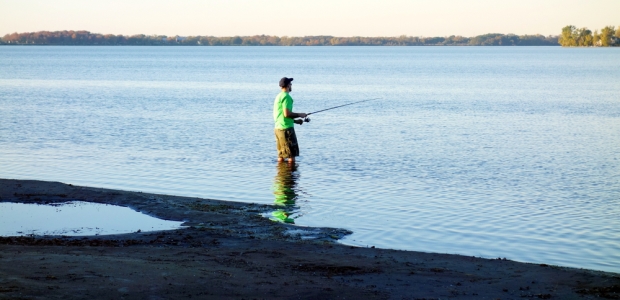
Lamprey Pheromone Becomes First Vertebrate Pheromone Biopesticide
The EPA has, for the first time ever, registered a sea lamprey mating pheromone as a vertebrate pheromone biopesticide, which will be used to help collect and remove adult lampreys before they have a chance of reproducing.
In an effort to help control the population of sea lampreys in the Great Lakes, the EPA has registered the first ever vertebrate pheromone biopesticide made from the mating pheromone emitted by male lampreys.
“The Great Lakes Fishery Commission is very excited about this accomplishment,” said Dr. Robert Hecky, chair of the commission. “U.S. EPA registration of the sea lamprey mating pheromone opens the door for use of the pheromone in the commission’s sea lamprey control program, which protects Great Lakes fisheries from destruction caused by invasive sea lampreys.” Dr. Hecky also emphasized the critical role of partners. “This achievement has been many years in the making and could not have occurred without the excellent work of our collaborators at the U.S. Geological Survey, Michigan State University, and Bridge Organics Company.”
Sea lampreys have been a huge problem in the Great Lakes since invading the areas in the 1800s and early 1900s. Since then, the lampreys have caused ecological and economic damage, but with this new biopesticide, that may be able to change.
“Our research has shown that the sea lamprey mating pheromone holds great promise for the sea lamprey control program,” explained Dr. Weiming Li, professor at Michigan State University through the commission’s Partnership for Ecosystem Research and Management. “With a large-scale field trial, we demonstrated that pheromone baits can increase trapping efficiencies by up to 53 percent and baited traps can capture up to two times the sea lampreys that un-baited traps can.”
The biopesticide can be used in the U.S. and Canada once registed and will help control the lamprey population in the Great Lakes, protecting a $7 billion fishery.